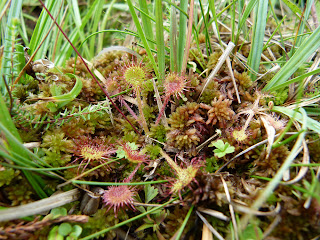We loved the idea and a vote was made to make 2nd April the NCPD, to commemorate the start of the new growing season and the life of Scottish-Irish, Governor of North Carolina and naturalist, Arthur Dobbs (1689-1765). It was Dobbs who first made the iconic Venus Flytrap known to botany, in a letter to English cloth merchant and naturalist-collector Peter Collinson, dated April 1759:
"We have a kind of Catch Fly sensitive which closes upon anything that touches it..."
Dobbs also happens to been born on 2nd April.
 |
| Arthur Dobbs (1689-1765) |
Dobbs is recognised in several respects: playing a significant role in British politics, in particular improving the fortunes of Ireland's poor economic climate; his search to find the Northwest Passage into the South Sea (Pacific), albeit ending in failure; his scientific study "Concerning Bees and their Method of Gathering Wax and Honey" (represented at the distinguished Royal Society); astronomical observation (Royal Society); the colonisation and expansion of Northern America; contributing towards driving the French from North America; and of course the formal discovery of the VFT.
In recognition of the day bell-ringers Sue Tobell, Annemarie Adams, Ian Hamilton, William Pannell and Angie Pannell (left to right below) will mark the day each year, ringing one of the following methods: Triffid Surprise Minor, Sundew or Pitcher.
The Society are looking for other suggestions to mark the day and your comments would be very welcome.







